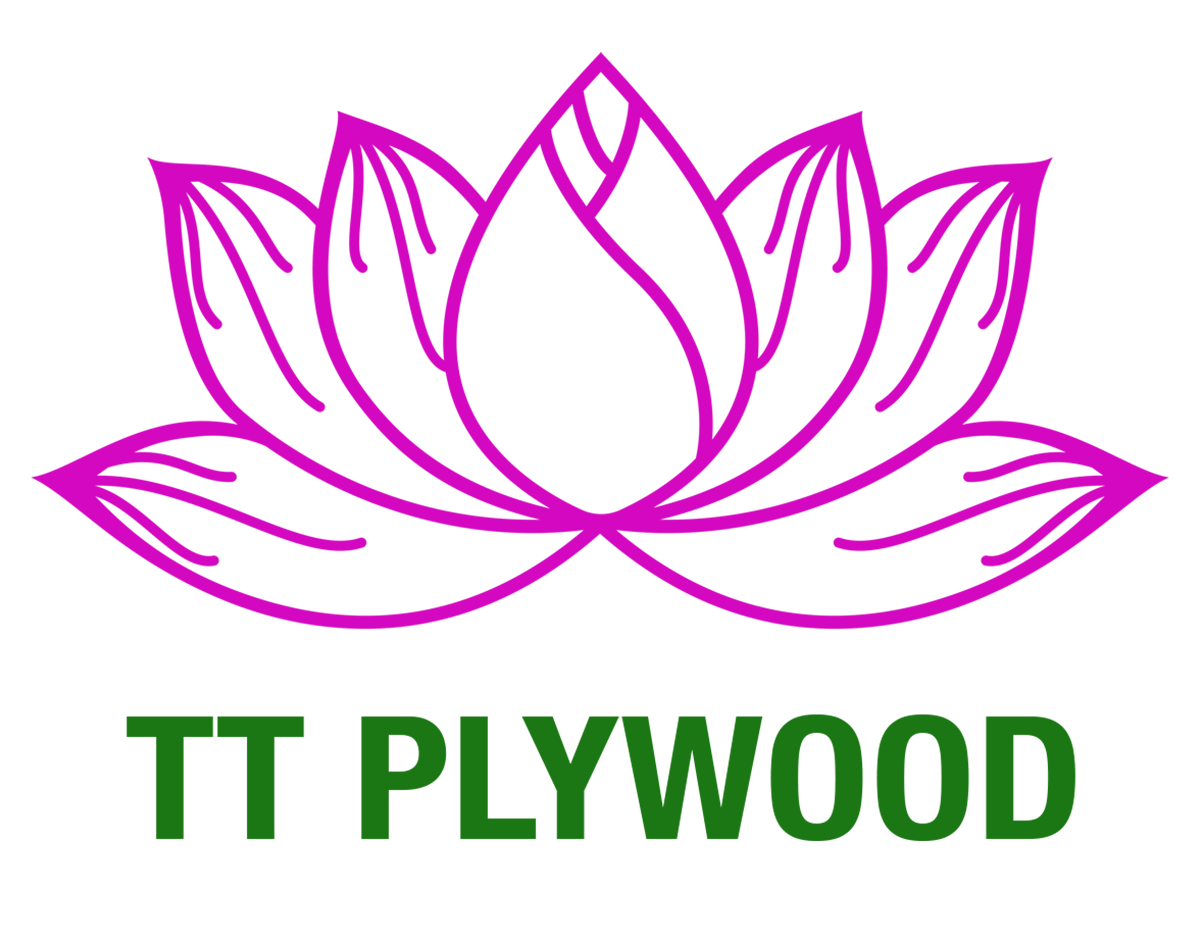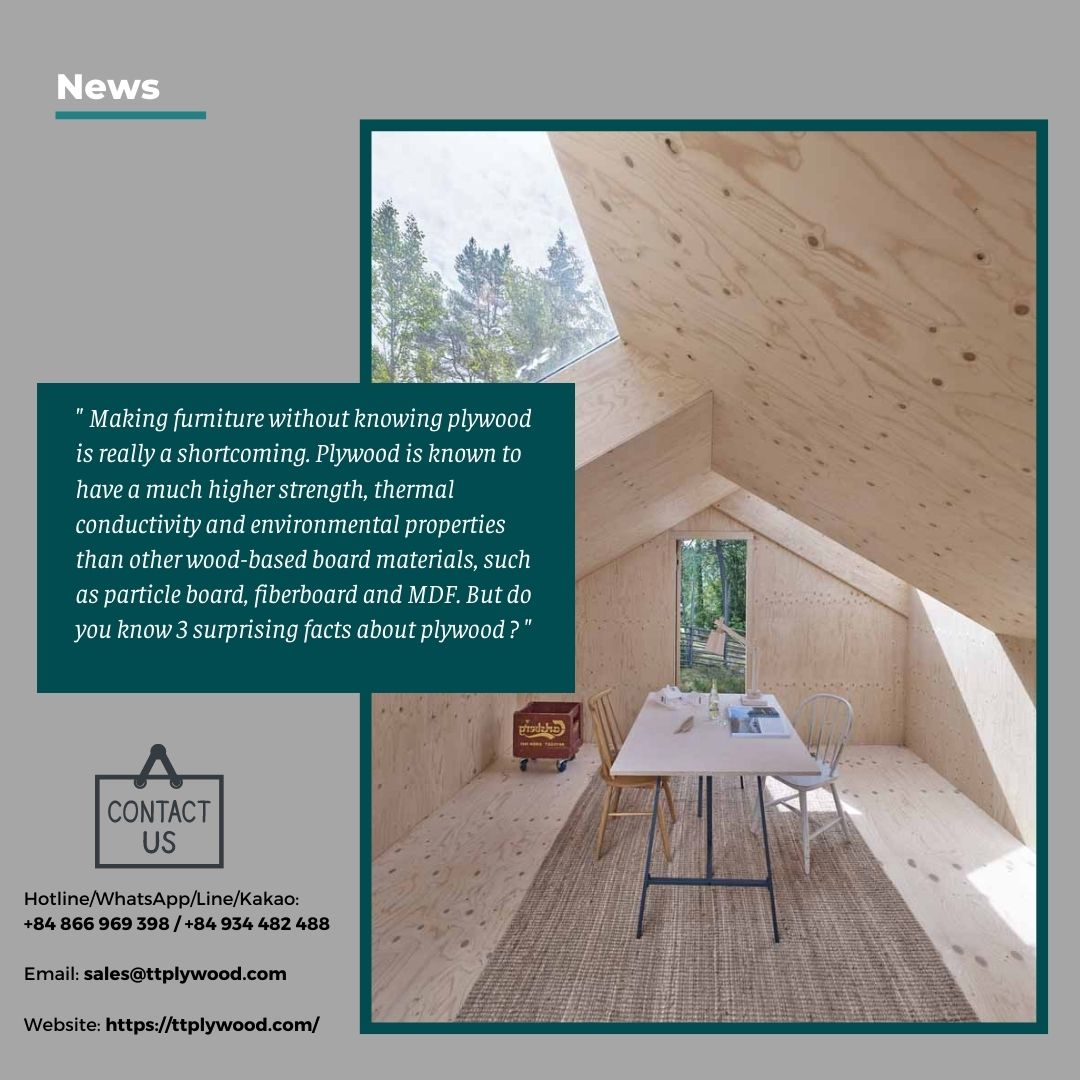-
-
-
Total payment:
-

3 INTERESTING THINGS ABOUT PLYWOOD THAT YOU MAY NOT KNOW
Posted by Đỗ Tiến Hải at 28/03/2022
Making furniture without knowing plywood is really a shortcoming. Plywood is known to have a much higher strength, thermal conductivity and environmental properties than other wood-based board materials, such as particle board, fiberboard and MDF. But do you know 3 surprising facts about plywood ?
Is plywood stronger than wood?
- Ply wood is characterized by high strength and dimensional stability and has advantages over wood, for example.
- Due to the interlocking effect of the veneer layers, plywood has better (less) swelling and shrinking properties than solid wood panels. Ply wood is used where high loads and thin sections are required.
- Ply wood is light in weight, easy to combine with other materials, easy to work with, withstands temperature changes and is aesthetically pleasing.
- Its strength, thermal conductivity and environmental properties are much higher than that of other wood-based board materials, such as particle board, fiberboard and MDF.

Is plywood toxic?
- Formaldehyde release - plastic emissions from ply wood is very low and meets international environmental standards.
- On the other hand, like other building materials, ply wood can pose health risks. It contains an irritant, formaldehyde, which is classified by the International Agency for Research on Cancer (IARC) as a proven human carcinogen.
- Faced with the realization of this risk, ply wood manufacturers are moving towards less use of these substances, which are especially harmful to employees handling this material.

How is plywood classified?
Different quality levels have been defined for ply wood. Their meanings are given below:
- A: Name for a light colored ply wood with absolutely no notches in the top layers. Only minimal bleeding is allowed in ply wood of this quality.
Bleach: The powder layer is completely bleached with no notches on the top layers. This wood is very light and does not bleed.
- AB: This light-colored membrane also has no knots on the top layers and may bleed colored. There may be a few healthy, overgrown branches, but this is rare.
- B: With this layer of paper, there can be small, unfussy knots that grow firmly. Color inputs and knots up to 8mm as well as putty are allowed.
- BB: This is the layer with branches. Color, irregular or flat knots and small cracks in the top layers are also allowed in this quality level. The use of mainsprings up to 15mm is allowed and the use of putty is allowed.
- C: Lowest quality grade. Here the wood can have nicks, irregularities as well as cracks and all natural defects. Untreated defects in the top layers and wood defects can also occur here.
Usually two quality specifications are separated by a slash. (Example: A/B) The first letter refers to the front and the second to the back.

Tags :
birch plywood
box
cheap plywood
Commercial plywood
construction plywood
crate
EXPORT PLYWOOD
FFP
film faced plywood
frames
Furniture plywood
LVL
Marine plywood
packing plywood
pallet
pine face
plywood
PLYWOODVIETNAM
tego
TTP
TTPLYWOOD
TT PLYWOOD
types of plywood
VENEER
Vietnamese plywood










